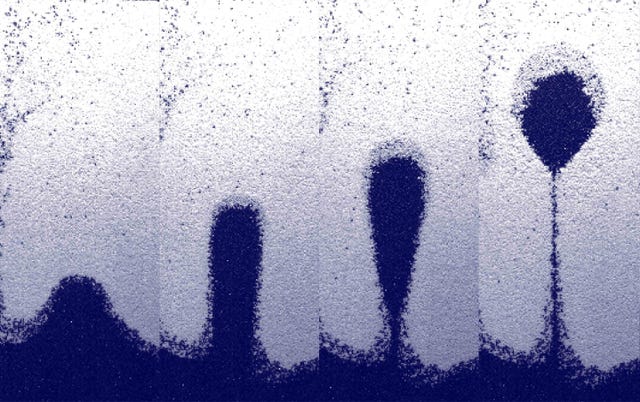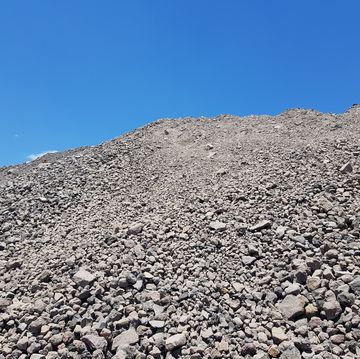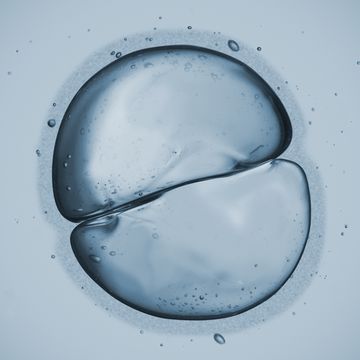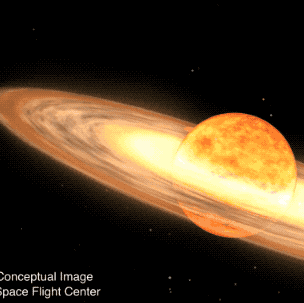A group of researchers have created bubbles out of sand for the first time. While this might sound like child's play, these bubbles act almost exactly like bubbles in liquids, a fact that help scientists understand more about the physics of granular materials.
Historically, physics has done pretty well in describing solids, liquids, and gases. But physicists have struggled with granular materials like sand and salt. In some cases, these materials can act like liquids as they flow and take the shape of their containers. But they also differ from liquids in crucial ways. For instance, if you pour sand onto a table it will form a pile instead of a puddle.
Part of the trick around finding laws of physics that work for granular materials is learning when they behave like liquids and when they don’t. Typically, this is done through experimentation and classic trial and error. Physicists will try to get sand to act like a liquid and see if it works. Regardless of the outcome, we learn a little more about the physics of granular materials.
That’s the motivation behind this recent experiment. The scientists in question wanted to test a process known as Rayleigh-Taylor instability. This instability is essentially the formation of bubbles with layered liquids of different densities. Most people are probably familiar with this instability from lava lamps, where the two liquids in the lamp form bubbles that rise and sink as they heat up and cool down.
Thanks to this experiment, we now know that sand works in much the same way. The researchers filled a container with two types of sand, one with large grains and one with small grains. The small-grained sand sat on the bottom of the container, and when that container was vibrated ‘bubbles’ of sand rose to the top.
This is a pretty big deal for granular physics and other sciences. The researchers behind the study believe that this result could help other scientists explain some rare geologic events and formations, and it may have some applications in pharmaceuticals, too.
Sand might be very weird for physics to describe, but trying to understand it comes with plenty of benefits.














